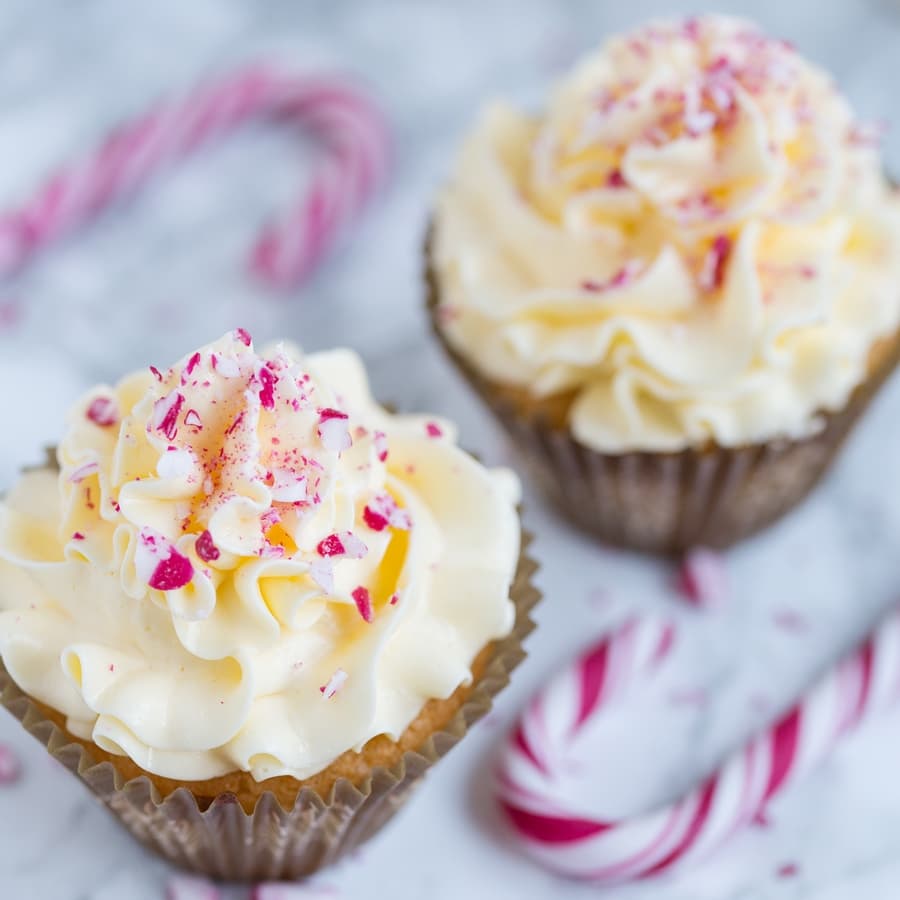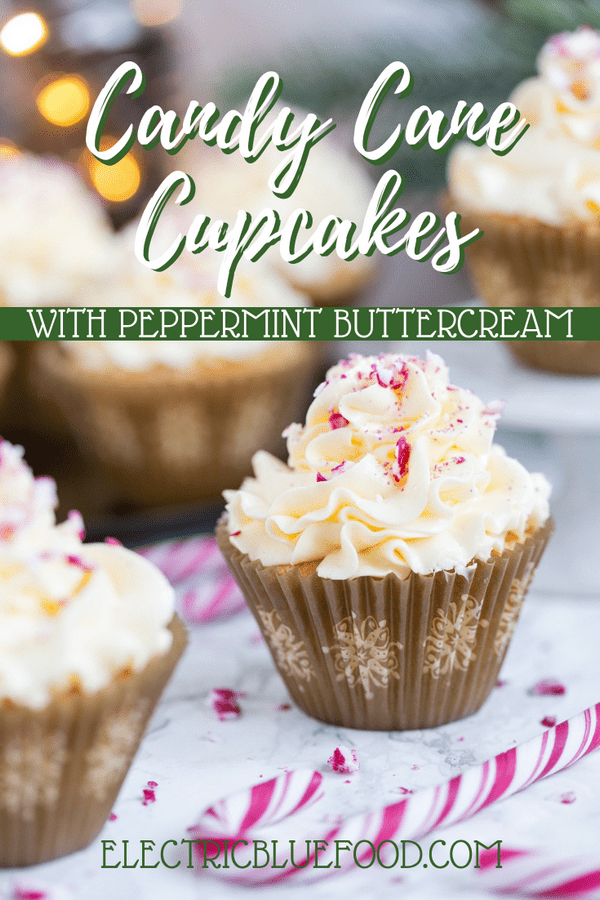If you came here for inspiration on what to bake this upcoming holiday season, my suggestion this year is candy cane cupcakes with peppermint buttercream. Cupcakes are always a good idea, and nothing screams “Christmas” more than candy canes, right? There’s more, I also have a little story for you. Peppermint candy sticks are a very important feature in Sweden’s culinary tradition, and it all began in the kitchen of a young widow in the village of Gränna in 1859… Read on for a little story to tell your loved ones at this year’s Christmas table.


Last winter I took for the month of December a flavour challenge, determined to explore 4 key flavours of the Swedish Advent. I started off with saffron, typically used in St Lucia baking, and made saffron panna cotta. Then it was time for gingerbrad, and instead of making the classic cookies I decided to make gingerbread no-bake cheesecake. Cinnamon is the spice used in a traditional Swedish Advent food, the Christmas porridge risgrynsgröt. As for cloves, my fourth Christmas spice, I took to a Polish wintertime drink, mulled beer.
That’s not all, but the four weeks of December allowed for this selection last year. So this year I’m continuing my Advent flavours exploration with peppermint. Growing up in Italy to me peppermint is mostly a summer flavour. I loved adding sugary peppermint syrup to water in the summer, it would make it feel extra cooler, such a relief from the summer heat. Yet when I moved to Sweden I realized that peppermint is more a winter thing here. When I was working as a teacher, I learned through my kids that peppermint is a favourite candy flavour, particularly during Advent.


The Swedish peppermint candy
Polkagris, as peppermint candy is known in Sweden, is in fact a culinary cultural heritage here. It was invented in the small town of Gränna in 1859 by Amalia Eriksson. She was a young widow who opened a candy shop to support herself and her daughter after the death of her husband. The poor Amalia had just given birth to her first children, a couple of twins. One of them was a stillborn, but the other kid, Ida, survived. Only 4 days after the birth, still grieving over her dead child, Amalia also lost her husband to illness.
Left alone with a baby and in deep sorrow, Amalia was determined to find a way to provide for herself and her daughter. She asked the concession to open a small candy shop at a time when women entrepreneurs were quite a rare happening. But given her status as widow, she was granted concession to provide for her family and her candy bakery opened for business. There she started the production of peppermint candy sticks that would eventually rise to become one of Sweden’s most beloved candies.
The first commercially sold polkagrisar were candy sticks made of twisting red and white sugar ribbons. They do resemble candy canes, but they’re straight and not hooked. Nowadays you can find polkagris candies in all shapes, and even polkagris ice cream – peppermint flavoured ice cream that is usually bright pink. This is something I find particularly fascinating. In Italy peppermint gelato is green. The peppermint syrup I used to add to my water in the summer as a kid had a deep green colour that turned my water green. I was brought up knowing that peppermint equals green. But in Sweden peppermint in the candy tradition is Amalia Eriksson’s polkagris made of twisting red and white, so peppermint ice cream in Sweden could only be pink.


So to honour one more flavour of the Swedish Advent, this year I made cupcakes with peppermint frosting. Decorated with crushed candy cane – or crushed polkagris. I did not add any food colouring to the buttercream as I wanted to keep it white as snow. The decoration is very simple, but it beautifully contrasts with the candid frosting. Happy baking this Advent season!
Candy cane cupcakes with peppermint frosting
Ingredients
For the cupcakes
- 75 g margarine
- 75 g granulated sugar
- 2 eggs
- 75 g flour
- 1 tsp baking powder
- 1 tbsp heavy cream
For the frosting
- 240 g butter
- 120 g powdered sugar
- 60 g egg whites
- 2-3 drops pure peppermint extract
- crushed candy cane for decoration
Instructions
To make the cupcakes
- Line a muffin tray with paper cups and preheat the oven to 180°C.
- Combine the sugar and the margarine, which needs to be at room temperature. Cream with an electric mixer for 3-4 minutes, until light and fluffy. Add the eggs, one at a time, and keep mixing until all is nicely combined.
- Mix the flour and baking powder, and add to margarine mixture. Mix at low speed until combined. Pour in the cream and just mix until it's all homogeneous. Divide batter into 8 paper cups and bake in the preheated oven for 20 minutes at 180°C.
To make the frosting
- Combine the egg whites and powdered sugar and whisk over a double boiler until the mixture feels smooth to the touch.
- Transfer the mixture to a bowl and mix at medium-high speed until the mixture has cooled down to room temperature (this can take 5-6 minutes).
- When the mixture feels at room temperature, slow the mixer to medium-low and add the butter, little by little. The butter must be at room temperature. When all the butter has been incorporated, add the peppermint extract. 2-3 drops should be enough, but adjust to taste.
- When the cupcakes have completely cooled down, pipe the peppermint buttercream over each cupcake. Top with some crushed candy cane for extra colour and flavour.




